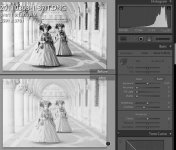JPSuisse
Well-known
Hi all...
I am in the process of reviewing all my technique now that I need to change films. In particular the death of Neopan 1600 and 125 PX, Kodachrome and Ektachrome has led me to the conclusion it's time to review all and move forward with new ideas.
The good side to all this is that there are really some interesting new choices out there in the way of film and develpers, and this has given me the chance to reflect on my technique (or lack thereof).
Here is my strategy for slide film:
We are going to work with Provia 100 and 400. I have a couple Pentax spot meters. First, I'm going to measure the brightest and darkest areas in a scene, bracket the exposures 2 half stops up and 2 half stops down, and then find out where the clipping starts and where the color looks good. Then just expose for the highlights and good color area using a spot meter for the next months and analyze the overall results.
For black and white...
We are going to work first with slower speeds: Silvermax 100, Pan F 50, and Rollei Retro 80s at box speed. Measure the brightest and lowest ranges, bracket so as not to under expose the shadows, and bump up the development times maybe 20% in low contrast situations. (Low contrast situation needs to be defined here.) The goal here for black and white is to get a feeling for getting a good tonal response and a not too flat negative and to decide which of these 3 films I want to work with going forward.
What do you think? Trying to proceed methodically like this, how long till I can get a feel for new film types?
Cheers,
John
I am in the process of reviewing all my technique now that I need to change films. In particular the death of Neopan 1600 and 125 PX, Kodachrome and Ektachrome has led me to the conclusion it's time to review all and move forward with new ideas.
The good side to all this is that there are really some interesting new choices out there in the way of film and develpers, and this has given me the chance to reflect on my technique (or lack thereof).
Here is my strategy for slide film:
We are going to work with Provia 100 and 400. I have a couple Pentax spot meters. First, I'm going to measure the brightest and darkest areas in a scene, bracket the exposures 2 half stops up and 2 half stops down, and then find out where the clipping starts and where the color looks good. Then just expose for the highlights and good color area using a spot meter for the next months and analyze the overall results.
For black and white...
We are going to work first with slower speeds: Silvermax 100, Pan F 50, and Rollei Retro 80s at box speed. Measure the brightest and lowest ranges, bracket so as not to under expose the shadows, and bump up the development times maybe 20% in low contrast situations. (Low contrast situation needs to be defined here.) The goal here for black and white is to get a feeling for getting a good tonal response and a not too flat negative and to decide which of these 3 films I want to work with going forward.
What do you think? Trying to proceed methodically like this, how long till I can get a feel for new film types?
Cheers,
John


